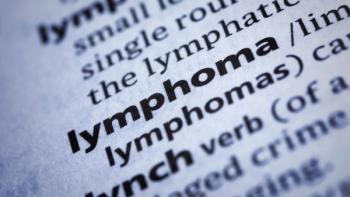
Despite Rapid Increase in Immunotherapy Use for Lung Cancer, Survival Benefit for Older Patients Is Modest
Key Takeaways
- Immunotherapy adoption for NSCLC has increased rapidly, with over half of patients receiving treatment soon after immune checkpoint inhibitors' introduction.
- Survival benefits from immunotherapy are significant in younger patients but modest in older patients, necessitating further research on age-related factors.
Since 2015, the use of immunotherapies has increased for both young and older patients, but the survival benefit is more evident in younger patients, findings demonstrated.
Over the past decade, the use of immunotherapy as treatment for advanced non-small cell lung cancer (NSCLC) has increased rapidly, although survival benefits from these therapies have been limited, especially in older patients, according to recent study findings.
“We found that within a couple years of the introduction of (immune checkpoint inhibitor) treatments into the market, over half of patients with lung cancer were getting these treatments regardless of their age,” said Dr. Cary P. Gross, professor of medicine at Yale School of Medicine in New Haven, Connecticut, in an interview with CURE®. “But we also found that while survival improved in younger patients in a substantial way, in older persons, there was only a minimal change in survival. This suggests that we need to look more closely at whether older people are truly benefiting from these agents.”
‘Exciting New Medicines’
There have been over 20 new Food and Drug Administration (FDA) approvals for the treatment of NSCLC, according to the introduction of the study published in JAMA Oncology. This increase in treatment options for patients with NSCLC may have potentially decreased the rate of lung cancer deaths in the U.S.
“These are
Gross and colleagues analyzed data from 53,719 patients (mean age, 68.5 years) from approximately 280 community-based clinics in the U.S. In particular, these patients had stage 3B, 3C or 4 NSCLC that was diagnose between 2011 and 2019.
“The majority of patients with cancer are over the age of 65 years,” Gross said. “We can think about cancer as an aging-related disease in many ways. That is why our research team is particularly interested in this group, in understanding the risks and benefits of new cancer treatments when they are used in older people.”
The percentage of patients receiving cancer-directed therapy increased from 69% in 2011 to 77.2% in 2019. After the FDA approved the first immune checkpoint inhibitor for the treatment of NSCLC, the use of these therapies increased from 4.7% in 2015 to 45.6% in 2019. The
Survival With Immunotherapies
The probability of two-year survival from 2011 to 2018 in patients younger than 55 years old increased from 37.7% to 50.3%. in contrast, these rates modestly increased in patients 75 years and older (30.6% versus 36.2%).
In addition, the median survival in patients younger than 55 years increased during the study period (11.5 months to 16 months). For patients 75 years and older, this increased from 9.1 months to 10.2 months.
“Our study wasn’t designed to answer (why survival gains were modest in older patients), but it’s crucial to understand why,” Gross said. “It could be because their overall life expectancy is shorter. It could be because they have a different risk of (side effects) than younger people. Future work is needed, but unless we redesign our system of research to focus more on the older patients — the ones who are actually taking these medications — we’ll never know.”
For more news on cancer updates, research and education, don’t forget to




